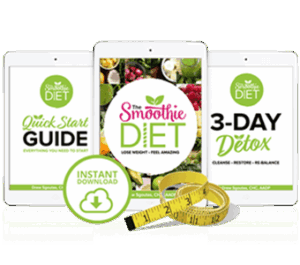During the last decade, peptide therapy emerged as a hip, and effective way of health optimization, anti-aging, and targeted wellness. With science and functional medicine lending support to its effectiveness, treatment with peptides offers a low-risk, customized solution for those patients looking to increase energy, recovery, weight management, and mental acuity. For most newcomers, however, the territory can be intimidating.
This guide breaks down what peptide therapy is, how it works, and what you need to know as a new user. You’ll discover key benefits, ways of use, and user-friendly peptides all spelled out in simple terms.
What makes peptide therapy so powerful?
Peptide therapy uses specific chains of amino acids to talk to the body about healing, balance, or regrowing. Here’s why people are turning to it:
- Precision targeting: Peptides target at a cellular level to activate unique pathways
- Safe and natural: Many peptides are bioidentical to what the body produces
- Versatile benefits: Can support fat loss, energy, hormone balance, injury recovery, sleep, and more
- Multiple delivery modes: Injections, nasal sprays, oral pills, or topical application
- Low risk when under expert guidance: Minimal side effects, if any, under professional supervision
These considerations render it most ideally suited to today’s health seekers who are interested in long-term results and functional support.
Understanding peptide therapy basics
Peptide therapy sounds scientific, but the basics are easy to grasp.
What are peptides?
Tiny chains with big impact peptides are short amino acid chains-protein building blocks. Peptide chains tell cells to perform certain tasks. The body itself already produces a lot of peptides, such as insulin and collagen. Therapeutic peptides are produced in a lab to perform the same more precisely.
How peptide therapy works
Science meets self-repair therapeutic peptides bind to receptors in the body, influencing healing, hormone regulation, metabolism, and inflammation. Unlike pharmaceutical drugs, peptides do not override systems but help stimulate the body’s natural repair mechanisms.
Key benefits of peptide therapy
A new dimension of personalized wellness peptides are used for:
- Anti-aging and longevity.
- Muscle growth and recovery.
- Weight loss and metabolism.
- Immune support.
- Cognitive clarity and mood.
How beginners can safely start peptide therapy
Peptide therapy for beginners should focus on safety, guidance, and gradual implementation.

Beginner friendly peptides to consider
Start with low-risk, high-impact compounds
- BPC-157: A powerful healing peptide for injuries and gut repair
- CJC-1295/Ipamorelin: Growth hormone secretagogues that support fat metabolism and recovery
- GHK-Cu: Used in skincare and anti-aging for collagen production
- AOD9604: Fat-burning support without muscle degradation
How to Get Started
Follow a responsible wellness protocol
- Step 1: Consult a licensed provider experienced in functional or regenerative medicine
- Step 2: Complete bloodwork to establish a baseline
- Step 3: Choose peptides based on wellness goals (fat loss, sleep, immunity, recovery)
- Step 4: Begin with a monitored 8- to 12-week cycle
- Step 5: Track progress, symptoms, and lab results
Many providers offer peptides as part of broader programs that include nutrition, sleep support, and exercise plans.
Deeper benefits and long-term potential
Peptide therapy fits into long-term wellness strategies for those seeking sustainable, preventative care.
Peptides for longevity and age reversal
Adding quality to your years
- Epitalon: Studied for its ability to lengthen telomeres and delay aging at the DNA level
- Thymosin Beta-4: Supports immune regeneration and tissue repair
- GHK-Cu: Combats oxidative stress and promotes cellular regeneration
Peptides for performance optimization
Leveling up your body and mind
- BPC-157 and TB-500: Reduce inflammation and improve recovery
- Selank and semax: Improve focus, cognitive performance, and reduce anxiety
- CJC-1295: Enhances natural growth hormone levels, helping with endurance, sleep, and energy
In a world focused on reactive care, peptides offer proactive, science-based tools to feel better and live longer.
Practical solutions and guidance for everyday use
Want to integrate peptides into your routine with minimal hassle?
- Find a certified clinic: Search for functional medicine or peptide-trained MDs/NPs
- Ask for beginner protocols: Many clinics offer starter bundles based on goals
- Track outcomes: Use wellness apps or journals to monitor energy, sleep, inflammation, etc.
- Rotate and cycle: Avoid long-term dependence by alternating compounds as needed
- Combine with habits: Pair peptides with strength training, sleep hygiene, hydration, and nutrient-dense foods
The best results come when peptides are part of a broader, intentional lifestyle.
Additional segments to meet word count
Myths and misunderstandings about peptides
- Myth 1: Peptides are only for athletes – False. They benefit aging adults, women, chronic illness patients, and more.
- Myth 2: Peptides are steroids – False. They mimic natural biological signals without hormone suppression.
- Myth 3: Peptides are unsafe – False. Under professional care, peptides have a strong safety record.
Final thoughts
Peptide therapy is not a trend it’s the future of personalized wellness. For newcomers to functional medicine, peptides offer a science-backed, body-friendly way to repair, renew, and rejuvenate. Whether your goals are enhanced energy, anti-aging, or recovery from injury, peptide therapy is a modern, accessible tool you can start using today.
Speak to your provider, define your goals, and begin your journey toward optimized living with precision peptide therapy.















